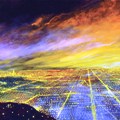
Getty’s new exhibition
Overdrive: LA Constructs the Future 1940-1990
Getty Center – Los Angeles
Through July 21, 2013
With Overdrive, at the Getty, we get an opportunity to see much of LA spread out before us in one place. This panoramic view should change the way we perceive its architecture and urbanism.
The exhibit shows how architects creatively interpreted the new conditions of Southern California’s multi-centered suburban metropolis, and how those concepts continued to evolve.
Overdrive is the story of a remarkable creative flowering throughout the second half of the twentieth century in Southern California. Now we can see that it was broader, more diverse, and more inclusive than we generally thought.
Full Post

Union Station Walking Tour
The Union Station tour covers architecture, art, culture, and social history as it celebrates one of the great landmarks of Los Angeles, the 1939 Union Station.
The grand opening of Union Station was celebrated with a three-day extravaganza attended by nearly half a million people. The station’s monumental architecture, a unique combination of Spanish Colonial Revival and Art Deco styles, assured that it would be one of the most identifiable landmarks in the city. It also turned out to be the last great railway station built in America, constructed as it was near the end of the heyday of rail travel. The vast and extraordinary spaces now serve as station to the city’s Metro Rail lines, and once again tens of thousands of people course through the building every day.
In the mid-1990s, an intermodal transit center and 28-story office tower was added on the east side of Union Station. These additions draw on the 1939 station for inspiration, interpreting the vast spaces and southwestern colors in a new way, and incorporating the work of many different artists as part of the public spaces.
Places to visit:
Exterior
Ticket concourse
Main waiting room
North and south patios
Fred Harvey Restaurant *
Train platforms
East portal transit center
MTA building
(*Interiors visited, subject to availability)
Tour Organizer: The Los Angeles Conservancy – (213) 623-2489 – info@laconservancy.org
Tour Schedule: Third Saturday of every month
Start time: 10:00 am
Length: 2-1/2 hours
Distance covered: About 1-1/2 miles total walking
Meeting Location: Union Station, 800 N. Alameda Street. Tour meets in the Alameda Street entrance lobby, near the information counter.
Full Post

Downtown Renaissance
Explores the former financial heart of the city, an area of Spring Street and Main Street that has a rich past and a vibrant future.
Main Street is one of the oldest streets in Los Angeles. Originally lined with haciendas and livestock corrals, it evolved into the city’s first major business district in the mid-nineteenth century. By the 1880s, the hub of commerce was shifting west to Spring Street, and Main Street emerged as an entertainment district with theatres, restaurants, and hotels, several of which remain.
Spring Street was the business center of Los Angeles throughout most of the twentieth century. Its concentration of banks and other financial institutions inspired its nickname, “Wall Street of the West.” Grand terra cotta facades and gleaming marble lobbies still define the street. Recognized for its remarkable historic integrity, Spring Street from Fourth to Seventh Streets is a National Register Historic District.
In 1999, the city of Los Angeles enacted an Adaptive Reuse Ordinance that fostered the renewal of underused historic structures, resurrecting neglected landmarks and spurring downtown’s revitalization. Spring and Main Streets are once again drawing people to the area with lofts, shops, galleries, theatres, and restaurants.
Places to Visit:
San Fernando Building
Farmers and Merchants Bank and Annexes
Hermann Hellman Building (now Banco Popular de Puerto Rico) *
Braly Block (now the Continental Building)
Stowell Hotel (also known as the El Dorado Hotel)
Title Insurance and Trust Building *
Alexandria Hotel*
Security National Bank Building (now Los Angeles Theatre Center) *
Broadway-Spring Arcade Building *
First Interstate Bank (now United California Bank)
Pacific Electric Building *
Rosslyn Hotel
Regent Theatre
(*Interiors visited, subject to availability)
Tour Organizer: The Los Angeles Conservancy – (213) 623-2489 – info@laconservancy.org
Tour Schedule: Second and Fourth Saturday of every month
Start time: 10:00 am
Length: 2-3/4 hours
Distance covered: About 1-1/4 miles total walking
Meeting Location: 400 S. Main Street (just south of 4th Street). Tour meets near the café to the right of the building’s Main Street entrance.
Full Post
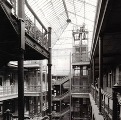
Historic Downtown Walking Tour
The Historic Downtown tour provides an overview of the historical and cultural landmarks of downtown Los Angeles. Covering a wide range of architectural styles, and including anecdotes about the people behind the buildings, this tour is a great way to become acquainted (or re-acquainted) with the unique character of downtown L.A.
Historic Downtown, as the area around Pershing Square is known, is the heart of downtown. Some of the most beloved Los Angeles landmarks are in this area, such as the Central Library, Angels Flight, and the Bradbury Building. The history of the area goes back to the founding of the city in 1781, and its architecture tells the story of the growth of the city from the 1890s to the present, including the current trend of conversions of vintage office buildings into loft-style apartments and condos.
Places to Visit:
Pershing Square
Biltmore Hotel
Pacific Mutual Building *
Mayflower Hotel (now Hilton Checkers)
Southern California Edison Building *
Los Angeles Central Library
US Bank Tower
Title Guarantee and Trust Building
Subway Terminal Building *
Broadway Department Store (now known as the Junipero Serra State Office Building)
Angels Flight
Grand Central Market *
Bradbury Building *
(*Interiors visited, subject to availability)
Tour Organizer: The Los Angeles Conservancy – (213) 623-2489 – info@laconservancy.org
Tour Schedule: Every Saturday
Start time: 10:00 am
Length: 2-1/2 hours
Distance covered: About 1-1/2 miles total walking
Meeting Location: Pershing Square, located at Olive Street and 6th Street in downtown Los Angeles. Tour meets in the center of the park, near the mini-groves of orange trees.
Full Post

Downtown: Modern Skyline Walking Tour
From architecture to public art to public space, Los Angeles’ Central Business District is a microcosm of the growth and development of Los Angeles.
From the 1880s when Victorian mansions crowned Bunker Hill, to today when sleek skyscrapers define the downtown skyline, the built environment of the Bunker Hill area has constantly evolved, reflecting the tastes, aspirations, and economics of the city’s population.
Experience the skyscrapers, plazas, and public art that define the bustling financial district today, and discover how they relate to both the past and the future of Los Angeles, one of the great cities of the world.
Places to Visit:
Biltmore Hotel and Tower
Gas Company Tower
Southern California Edison Building
Los Angeles Central Library
US Bank Tower
Standard Hotel
(formerly Superior Oil)*
City National Bank Plaza
(formerly ARCO Plaza)
Bonaventure Hotel*
333 South Hope Street
(formerly Security Pacific)
Wells Fargo Center*
(*Interiors visited, subject to availability)
Tour Organizer: The Los Angeles Conservancy – (213) 623-2489 – info@laconservancy.org
Tour Schedule: First and Third Saturday of every month
Start time: 2:00 pm
Length: 2-1/2 hours
Distance covered: About 1-1/2 miles total walking
Meeting Location: Pershing Square, located at Olive Street and 6th Street in downtown Los Angeles. Tour meets in the center of the park, near the mini-groves of orange trees
Full Post
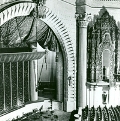
Broadway: Historic Theater and Commercial District
The Broadway Historic Theatre and Commercial District tour explores the social, cinematic, and architectural history of this unique street.
Home to an astonishing twelve movie palaces built between 1910 and 1931, and to nearly two dozen major department and clothing stores, Broadway was once the entertainment epicenter of Los Angeles. Although the theatres no longer regularly show films (special event venue, filming location, and retail are among the current uses), their elegant presence remains. Still a vibrant shopping street, the area is also a hub of adaptive reuse projects that have turned office buildings and department stores into loft-style apartments and condos.
Places to Visit:
(note: buildings are listed by their original or common names, which is not necessarily their current name or usage)
Million Dollar Theatre*
Bradbury Building*
Broadway Department Store
Roxie Theatre
Clune’s Broadway Theatre*
Pantages Broadway Theatre
Walter P Story Building*
Palace Theatre
Clifton’s Cafeteria*
Los Angeles Theatre
Loew’s State Theatre*
Morosco Theatre
Tower Theatre
Rialto Theatre
Hamburgers/May Co Department Store
Orpheum Theatre*
Eastern Columbia Department Store
Pantages Downtown *
(*Interiors visited, subject to availability)
Tour Organizer: The Los Angeles Conservancy – (213) 623-2489 – info@laconservancy.org
Tour Schedule: Every Saturday
Start time: 10:00 am
Length: about 3 hours
Distance covered: About 1-3/4 miles total walking
Meeting Location: Reservations are required for this tour. Meeting and parking information will be provided with your reservation confirmation.
Full Post
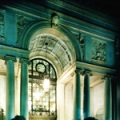
Biltmore Hotel Walking Tour
The Biltmore Hotel tour explores the architecture and rich history of this magnificent hotel, known in its early days as “The Host of the Coast.”
The Biltmore Hotel opened in 1923 as a 1,000-room hotel that was “first class in every respect.” This was the first hotel commission for the newly founded architecture firm of Schultze and Weaver, who later went on to design such grand hotels as the Park Lane and Waldorf Astoria in New York, and the Miami Biltmore in Coral Gables, Florida. In addition to the lobby and grand hallway designed to resemble a Spanish palace, the hotel has several ballrooms, each decorated in sumptuous Beaux-Arts splendor.
Over the years, the Biltmore played non-stop host to high society, international political figures, movie stars, and royalty (including Rudolph Valentino, the Prince of Wales, J. Paul Getty, Howard Hughes, Herbert Hoover, and Eleanor Roosevelt), and it was the 1960 Democratic Convention headquarters of John F. Kennedy. In local crime lore, the Biltmore is known as the last place Elizabeth Short (the Black Dahlia) was seen alive.
Tour Organizer: The Los Angeles Conservancy – (213) 623-2489 – info@laconservancy.org
Tour Schedule: Every Sunday
Start time: 2:00 pm
Length: 1-3/4 hours
Distance covered: About 1/3 mile total walking
Walking difficulty: Easy
Wheelchair accessible: Yes (please contact Conservancy office after ticket purchase to make arrangements)
Meeting Location: Reservations are required for this tour. Meeting and parking information will be provided with your reservation confirmation.
Full Post
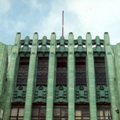
Art Deco Walking Tour
The Art Deco tour is an in-depth look at the history, materials, and style of Art Deco architecture popular in Los Angeles in the 1920s and 1930s.
Officially debuted at the 1925 L’Exposition Internationale des Artes Decoratifs et Industriels Moderne in Paris, the style now known as Art Deco took the western world by storm. New, modern, and angular, the style was perfect for the machine age, and was used for everything from jewelry to teapots to skyscrapers.
Typified by vertical lines, geometric patterns, and references to Gothic, pre-Columbian, and Egyptian art, Art Deco is stunning in its varieties of color and design. Downtown Los Angeles boasts an extraordinary collection of Art Deco buildings, due to a building boom during the heyday of this architectural style.
Place to Visit:
Southern California Edison Company Building*
Title Guarantee & Trust Building
Oviatt Building*
William Fox Building*
Sun Realty Building
Harris and Frank Building
Garfield Building
Ninth and Broadway Building*
Eastern Columbia Building
(*Interiors visited, subject to availability)
Tour Organizer: The Los Angeles Conservancy – (213) 623-2489 – info@laconservancy.org
Tour Schedule: Every Saturday
Start time: 10:00 am
Length: 2-1/2 hours
Distance covered: About 1-1/2 miles total walking
Meeting location: Pershing Square, located at Olive Street and 6th Street in downtown Los Angeles. Tour meets in the center of the park, near the mini-groves of orange trees.
Full Post
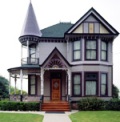
Angelino Heights Walking Tour
The Angelino Heights tour explores the architecture and history of this charming Victorian neighborhood east of Echo Park and south of Dodger Stadium.
Angelino Heights is considered one of the first suburbs of Los Angeles. Built on a hill just a few miles west of the city center, the area was developed in the mid-1880s by William W. Stilson and Everett E. Hall. It is one of the few neighborhoods in Los Angeles remaining intact from the Victorian era.
The main part of the tour explores Carroll Avenue, a street lined with Victorian homes from the late nineteenth century, nearly all of which have been fully restored. Carroll Avenue is a National Register Historic District, and in 1983 was designated as the first historic district (Historic Preservation Overlay Zone) in the City of Los Angeles. The neighborhood has been featured in dozens of films, TV shows, and commercials.
Tour Organizer: The Los Angeles Conservancy – (213) 623-2489 – info@laconservancy.org
Tour Schedule: First Saturday of every month (except New Year’s Day)
Start time: 10:00 am
Length: 2-1/2 hours
Distance covered: About 5 blocks total walking
Meeting Location: Reservations are required for this tour. Meeting and parking information will be provided with your reservation confirmation.
Full Post
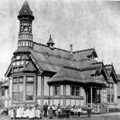
Highland Park Heritage Trust Walking Tour
This tour explores the rich and varied architectural and social history of the Sycamore Grove area of Highland Park, one of Los Angeles’ oldest neighborhoods.
Located along the Arroyo Seco, Highland Park was created in 1870 by developers who purchased the territory from Spanish and Mexican landowners. Incorporated into Los Angeles in 1895, it quickly became a thriving part of the city, and was once home to both Occidental College and USC’s School of Fine Arts. At the beginning of the twentieth century, the Arroyo Seco was a center of the nation’s emerging Arts and Crafts movement, and was home to one of Los Angeles’ first great preservationists, naturalist Charles Lummis. Highland Park-Garvanza is the city’s largest historic district (Historic Preservation Overlay Zone) with approximately 2,500 structures.
Places to Visit:
Sycamore Grove Park and the Sousa-Hiner Band Shell
La Casita Verde (former Ziegler House)*
Liddell “La Boheme” House*
Baker House*
The Hiner House*
Craftsman homes of Sycamore Terrace, known as “Faculty Row”
(*Interiors visited, Subject to availability)
Tour Organizer: Highland Park Heritage Trust – www.hpht.org – (323) 908-4127
Tour Schedule: Bi-Monthly – Call for schedule – Reservations required:
Start time: 10:00 am
Length: 2-1/4 hours
Distance covered: About 1-1/4 miles total walking
Full Post
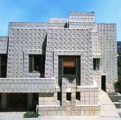
LA Architecture Tour – Masters of 20th-Century Residential Architecture
These three historic residences have short hours, so it’s important to start on time in order to visit all three places. Also, this day on the itinerary lets you see the homes in the order they were built.
Begin in Pasadena at the Gamble House. Designed by brothers Charles and Henry Greene, this 1908 bungalow (at 6,000 sq. feet, hardly what we think of as a bungalow) is perhaps one of the finest examples of the Craftsman style in the world, incorporating broad horizontal lines, Asian influences and, most of all, an incredible use of wood. This is the only Greene & Greene home anywhere that is open to the public. Docent-led, one-hour tours are the only way to see the interior: Thursday to Sunday noon to 3 p.m. The tours often sell out early, so it’s best to be here by 11:30 a.m. The bookstore has the best collection of Arts & Crafts-related books in LA. Also, you can pick up a walking tour of the immediate neighborhood, which includes more Greene & Greene homes plus Wright’s Millard House (La Miniatura).
From here, drive down Orange Grove Boulevard to the 110 Freeway, past Downtown LA to Sunset Boulevard. Take Sunset west to Hollywood Boulevard. Hollyhock House is on the top of the hill at the southwest corner of Hollywood Boulevard and Vermont Avenue. No dawdling, because you want to make the 2:30 p.m. tour.
Hollyhock House was Wright’s first LA project (finished in 1921), designed for oil heiress Aline Barnsdall on property once known as Olive Hill and now called Barnsdall Park. The Maya-inspired complex — recently opened to the public after an extensive restoration — is Wright’s first attempt at his concrete textile block design. This house is actually wood and stucco with concrete detailing of stylized hollyhocks. The interior can only be seen by docent-led tours, which are given in the afternoons Wednesday to Sunday at 12:30, 1:30, 2:30 and 3:30 p.m.
Continue on to the MAK Center/Schindler House by driving south on Vermont Avenue to Melrose Avenue, then west. From La Brea Avenue to Kings Road, there are dozens of restaurants for all palates and budgets. After lunch, continue west to Kings Road, then north. The Schindler House, built in 1922, was Rudolf Schindler’s home and studio. This is one of the best examples of the architect’s focus on integrating interior and exterior space. Schindler first came to LA as one of Frank Lloyd Wright’s protégés (he supervised much of the work at Hollyhock House). Then he made a name for himself as one of the 20th century masters. The MAK Center has frequent exhibits on related subjects.
Full Post
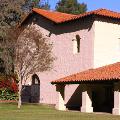
LA Architecture Tour – Classic Architecture
Walking tour begins at Downtown LA’s Union Station. The last of the great rail stations (opened 1939) and carefully restored to its full glamour, Union Station is a romantic blend of Spanish Mission, Moorish and Streamline Moderne elements. Imagine glamorous movie stars rushing across the elaborate marbled floor to catch a train east.
Walk down Alameda Street to Temple Avenue, west to Main Street to LA City Hall. The landmark has been recently restored (post-earthquake necessity). Built in 1928 in a quirky mix of styles, the top of the building pays homage to an ancient mausoleum. Add to that a little American skyscraper, Egyptian, Greek, Roman, Romanesque and Byzantine design. The rotunda dome is elaborately tiled and is a “must-see” for any trip to LA. For years, no other Downtown LA building was permitted to be taller (32 floors). The 27th floor Observation deck is open Monday to Friday 10 a.m. to 4 p.m.
Exit on the Spring Street side and walk south to 5th Street, then five blocks west to the LA Central Library. Watch your timing so you can take a docent-led tour (Monday to Friday 12:30 p.m., Saturday 11 a.m. and 2 p.m., and Sunday at 2 p.m.) or roam around on your own. The library — opened in 1926 — is a mix of Egyptian (the post-Tut influence), Byzantine and Spanish designs. The second-floor rotunda of the old wing has a spectacular chandelier, ceiling and massive murals — an LA tradition. After that, go see the postmodern, eight-story atrium in the new Tom Bradley Wing.
As you leave the Library on the 5th Street side, look up — way up. Across the street is the U.S. Bank Tower, the tallest structure west of Chicago (more than 1,000 feet tall — no roof access). Next to it are the Bunker Hill Steps, 103 graceful steps patterned on Rome’s Spanish Steps.
Just east of the Library is the Millennium Biltmore Hotel, the place to stay for presidents, kings and movie stars since 1923. The lush Italian/Renaissance style lobby is filled with columns, frescoes and boasts a dazzling ceiling.
For a late lunch, head to Grand Central Market by continuing east on 5th Street to Broadway, then north. Opened in 1917, this is one of those bustling, tempting marketplaces reminiscent of Europe. Plenty of choices are here when it comes to a fast meal or snack: Mexican, kebabs, Chinese, Salvadoran, Mongolian and more. The stalls sell fresh and sometimes, unusual fish and meats, plus produce.
At the southwest corner of Broadway and 3rd Street is the Bradbury Building, a 1893 reddish brick, Renaissance-style structure. “Office building” doesn’t begin to do it justice. The one-of-a-kind interior features a five-story atrium finished with glazed bricks, wrought-iron grillwork (including the cage elevator that will be familiar from the many movies filmed here). The building is open to visitors Monday to Friday 9 a.m. to 5 p.m. and you too can ride that famous elevator.
Stroll south down Broadway for several blocks, probably the busiest street in LA, to see the elaborate facades of long-ago movie palaces. This district has the greatest concentration of pre-WWII movie palaces and office buildings in the U.S.
Full Post
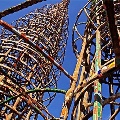
LA Architecture Tour – Pritzker Prize-winning Architecture
Often called the “Nobel Prize of Architecture,” the international Pritzker Prize is given to one living architect annually to honor his or her body of work. Today’s itinerary takes you to Los Angeles architectural masterpieces designed by three Pritzker Prize-winning architects.
Start at the southwest corner of Main and 1st Street in Downtown LA. CalTrans District 7 Headquarters sounds like a snooze until you discover that Thom Mayne and his firm, Morphosis, designed this modern wonder. CalTrans calls the 13-story structure futuristic with a design that goes beyond merely providing a functional workplace for almost 2,000 people. On the Main Street side, the building’s street number “100” rises four stories over the entrance. The main lobby, in typical LA style, blurs the boundaries between inside and outside space. Notice the neon tubes that grace the façade and comprise the massive environmental artwork — appropriately named “Motordom” — by artist Keith Sonnier. The tubes evoke taillights streaming down the freeway. Also look inside the lobby up to the third-floor conference room.
It’s a five-block walk west on 1st Street to the Walt Disney Concert Hall. The first glimpse is breathtaking. The stainless steel curved exterior unfolds like rose petals or the sails of a ship. The interior is a stark contrast, with Douglas fir in an abstract, tree trunk arrangement. Here, Frank Gehry has designed one of the most architecturally sophisticated concert venues in the world, with perfect acoustics designed by Yasuhisa Toyota. when they do not conflict with performances. The auditorium itself is not included in the tours when performers are rehearsing there. More often than not, you’ll have to attend a performance to see that.
Take the 110 Freeway south from Downtown LA to the 10 Freeway going west, then the 405 Freeway north to Getty Drive to reach the Getty Center. Richard Meier designed this breathtaking cultural center with views of the city and the sea. This $1 billion complex actually contains six buildings — far more than just one museum. Meier captured the essence of Southern California living with the open spaces and stunning gardens. Meier used Italian travertine marble (16,000 tons imported from Tivoli) for the Getty Center’s massive façade because he liked how light plays off the finish.
Full Post

LA Architecture Tour – Landmarks and Tour Companies
From Spanish Revival historic landmarks to homes and other buildings that span more than a century of design by the world’s most lauded architects, LA has so much superb architecture.
Downtown Los Angeles’ El Pueblo de Los Angeles Historical Monument (125 Paseo de la Plaza) features several Spanish Mission-style historical buildings around a plaza. The focal point of the area is the Avila Adobe, the city’s oldest building, off of which runs Olvera Street, a pedestrian street full of mariachi bands, Mexican food and craft stands, and folk dancing. The Old Plaza Firehouse (134 Paseo de la Plaza) was the city’s first firehouse and has recently been restored and turned into a museum of photographs and firefighting equipment from the 19th century.
Just around the corner from El Pueblo are some of the city’s well-known examples of Art Deco architecture — the movie palaces of Broadway – including the classic Orpheum Theater (842 S Broadway). Hollywood is home to several more classic movie palaces, including the infamous Grauman’s Chinese Theater (6925 Hollywood Blvd), the Egyptian Theater (6712 Hollywood Blvd), and the groovy Pantages Theater (6233 Hollywood Blvd).
Several homes in LA are architectural landmarks, including gems designed by Frank Lloyd Wright, Richard Neutra, Eero Saarinen, and R.M. Schindler. The MAK Center for Art and Architecture (835 N Kings Rd, West Hollywood) is housed in the home Schindler designed for himself, making it a great place to start getting acquainted with modern LA architecture.
And of course, you can’t forget the 1950s-era Southern California beach-boardwalk-meets-diner kitsch. Los Angeles is full of these little gems, most notably the Tail o’ the Pup (329 North San Vicente Blvd) hot dog-shaped hot dog stand in Beverly Hills, and Randy’s Donuts (805 West Manchester) with its huge doughnut-shaped sign in Inglewood near LAX.
There are also a handful of tour companies that run architectural tours of Los Angeles:
http://www.architecturetoursla.com (Classic Tours)
http://www.laconservancy.org/tours/ (Walking Tours)
http://sixtaste.rezgo.com/ (Food and Sightseeing)
http://www.aialosangeles.org/content/home-tours (Home Tours)
www.redlinetours.com (Downtown Walking Tour)
www.pasadenaheritage.org (Old Pasadena Tours)
Full Post
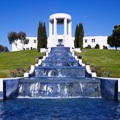
Stargazing in L.A.- Cemeteries
Almost everybody who visits L.A. hopes to see a celebrity, but celebrities usually don’t cooperate. There is, however, an absolutely guaranteed method to approach within 6 feet of many famous stars. Cemeteries are the place for star (or headstone) gazing: The star is always available, and you’re going to get a lot more up close and personal than you probably would to anyone who’s actually alive. Here is a guide to the most fruitful cemeteries. If you’re looking for someone in particular, log on to www.findagrave.com. (There’s a website for everything.)
Hollywood Forever (formerly Hollywood Memorial Park)
6000 Santa Monica Blvd., Hollywood (www.hollywoodforever.com).
The most notable tenant is Rudolph Valentino, who rests in an interior crypt. Outside are Tyrone Power, Jr.; Douglas Fairbanks, Sr.; Cecil B. DeMille (facing Paramount, his old studio); Carl “Alfalfa” Spritzer from The Little Rascals; Hearst mistress Marion Davies; John Huston; and a headstone for Jayne Mansfield (she’s buried in Pennsylvania with her family). In 2000, Douglas Fairbanks, Jr., joined his dad at Hollywood Forever.
The Catholic Holy Cross Cemetery
5835 W. Slauson Ave., Culver City (tel. 310/836-5500)
In one area, within mere feet of each other, lie Bing Crosby, Bela Lugosi (buried in his Dracula cape), and Sharon Tate; not far away are Rita Hayworth and Jimmy Durante. Also here are “Tin Man” Jack Haley and “Scarecrow” Ray Bolger, Mary Astor, John Ford, and Gloria Morgan Vanderbilt. More recent arrivals include John Candy and Audrey Meadows.
Hillside Memorial Park
6001 Centinela Ave., Baldwin Hills (www.hillsidememorial.com)
This Jewish cemetery has a L.A. landmark: the behemoth tomb of Al Jolson. His rotunda, complete with a bronze reproduction of Jolson and a cascading fountain, is visible from I-405. Also on hand are Jack Benny, Eddie Cantor, Vic Morrow, and Michael Landon.
Westwood Village Memorial Park
1218 Glendon Ave., Westwood (tel. 310/474-1579)
Its most famous resident, Marilyn Monroe, is entombed in a simple wall crypt, number 24. It’s also got Truman Capote, Roy Orbison, John Cassavetes, Armand Hammer, Donna Reed, and Natalie Wood. Walter Matthau and Jack Lemmon are buried here as well, a fitting ending for the Odd Couple.
Forest Lawn Glendale
1712 S. Glendale Ave. (www.forestlawn.com)
Contrary to urban legend, Walt Disney was not frozen and placed under Cinderella’s castle at Disneyland. His cremated remains are in a little garden to the left of the Freedom Mausoleum. Turn around, and just behind you are Errol Flynn and Spencer Tracy. In the Freedom Mausoleum itself are Nat “King” Cole, Chico Marx, Gummo Marx, and Gracie Allen — finally joined by George Burns. In a columbarium near the Mystery of Life is Humphrey Bogart. Some of the best celebrities — such as Clark Gable, Carole Lombard, and Jean Harlow — are in the Great Mausoleum, which you often can’t get into unless you’re visiting a relative.
Forest Lawn Hollywood Hills
6300 Forest Lawn Dr. (www.forestlawn.com)
On the right lawn, near the statue of George Washington, is Buster Keaton. In the Courts of Remembrance are Lucille Ball, Charles Laughton, and the not-quite-gaudy-enough tomb of Liberace. Outside, in a vault on the Ascension Road side, is Andy Gibb. Bette Davis’s sarcophagus is in front of the wall, to the left of the entrance to the Courts. Gene Autry is also buried here, almost within earshot of the museum that bears his name.
Full Post
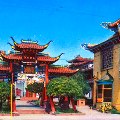
Ethnic Neighborhoods – Los Angeles
Los Angeles has the highest concentration of Mexicans outside Mexico, Koreans outside Korea, and even Samoans outside Samoa. Tiny Russian, Ethiopian, Armenian, and even British enclaves also coexist throughout L.A. But to call the city a “melting pot” wouldn’t be quite accurate; it’s really more of a tossed salad, composed of distinct, albeit overlapping, cultures.
Boyle Heights
East of Downtown; bounded by U.S. 101, I-10, Calif. 60, and Indiana St.
In the first decades of the 20th century, Boyle Heights was inhabited by Jewish immigrants, who have since migrated west to the Fairfax district and beyond. They left behind the oldest orthodox synagogue in Los Angeles, and Brooklyn Avenue, which has since been renamed Cesar E. Chavez Avenue. Boyle Heights is now the heart of the Latino barrio.
Chinatown
Downtown; bounded by N. Broadway, N. Hill St., Bernard St., and Sunset Blvd.
Many Chinese settled in this once-rural area during the second half of the 19th century. Today, most Angelenos of Chinese descent are well integrated into the city’s suburbs; few can be found living in this rough pocket of Downtown. But though the neighborhood hardly compares in quality or size to the Chinese quarters of London, San Francisco, or New York, Chinatown’s bustling little mom-and-pop shops and profusion of ethnic restaurants provide an interesting Downtown diversion. Chinatown is especially worth going out of your way for during Chinese New Year, a month-long celebration that usually begins in late January.
El Pueblo de Los Angeles
Enter El Pueblo Historic Monument via Alameda St. across from Union Station.
This historic district was built in the 1930s on the site where the city was founded, as an alternative to the razing of a particularly unsightly slum. The result is a contrived nostalgic fantasy of the city’s beginnings, a kitschy theme park portraying Latino culture in a Disney-esque fashion. Nevertheless, El Pueblo has proven wildly successful, as L.A.’s Latinos have adopted it as an important cultural monument.
Koreatown
West of Downtown; bounded by Wilshire Ave., Crenshaw Blvd., Olympic Blvd., and Vermont Ave.
Here’s something you probably didn’t know: There are more Koreans in Los Angeles than anywhere else in the world outside of Korea — some 100,000. If you drive down Western Avenue between Olympic and Wilshire boulevards it won’t take much imagination to believe that you’re suddenly in a section of Seoul. Hundreds of signs in Korean script are bolted onto dozens of minimalls and office buildings within this vibrant commercial district.
Leimert Park Village
Southwest of Downtown; bounded by Crenshaw Blvd., Vernon Ave., Leimert Blvd., and 43rd Place.
The neighborhood around tiny Leimert Park is becoming a center of African-American artistic life and culture. It features galleries, restaurants, and shops filled with local crafts and African imports. Folks flock here to jazz clubs that evoke the heyday of L.A.’s Central Avenue jazz scene, when greats like Ella Fitzgerald mesmerized audiences. In December, Kwanzaa celebrations further enliven Leimert Park.
Little Tokyo
Downtown, southeast of the Civic Center; bounded by 1st, 2nd, San Pedro, and Los Angeles sts.
Like nearby Chinatown, this redeveloped ethnic neighborhood isn’t home to the majority of Angelenos of Japanese ancestry; suburban Gardena has that distinction. But Little Tokyo functions as the community’s cultural focal point and is home to several malls filled with bakeries, bookshops, restaurants, and boutiques, as well as the occasional Buddhist temple. The Japanese American National Museum is here, as is the Japanese American Cultural and Community Center.